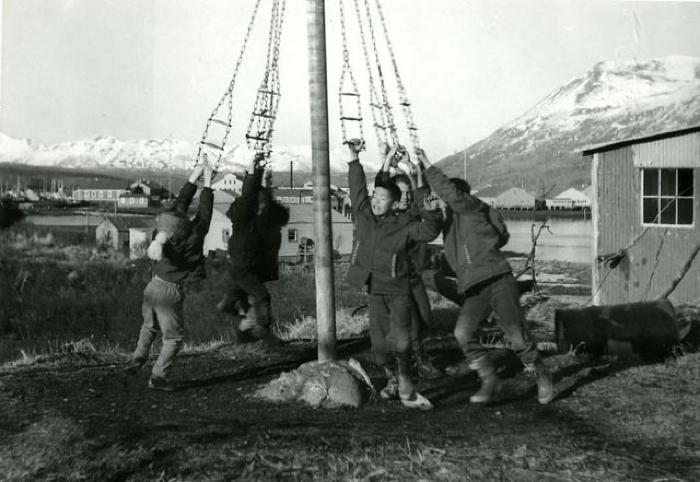Play — Wamluni, Salirluni

Education in Alutiiq communities focused on training children the essential skills of adult life. Young people learned these skills by listening to stories and legends, helping their Elders, and imitating adult activities with toys. Archaeological sites in the Kodiak Archipelago have produced many miniature items—tiny duplicates of full-sized objects. Small-scale oil lamps, bowls, scoops, ulus, and skin-stretching boards helped little girls learn domestic tasks, while boys learned boating, hunting, and ceremonial responsibilities with toy kayaks, bows, harpoons, clubs, and drums.
Children also played with toys designed simply for fun: tops, dart games, and dolls are remembered fondly by Elders and are found in archaeological sites. Examples of dolls include peg-like figures of men in hunting hats designed to fit into toy kayaks, and larger dolls with carefully carved faces and body tattoos, which may have been dressed in skin clothing.
Alutiiq Elders recall strict rules on playing with toys. Toys were carefully stored during the winter season to avoid bad luck. Children were allowed to play again in the spring when migratory birds arrived signaling the rebirth of the year.
